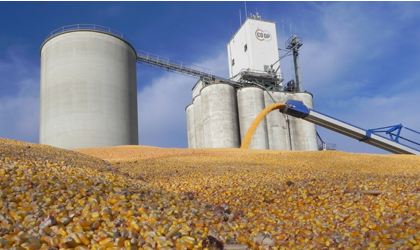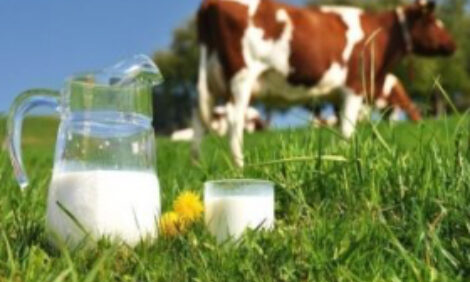



Lock in Lower Feed Costs: Storing Wet and Modified Distillers Grains
Those looking to feed distillers grains this winter should look to buy now as a great way to 'lock in' lower feed costs, advises Cow/Calf field specialist Warren Rusche.A change in the market has seen distiller dried grains and solubles not only drop in cost but fall below the value of corn, according to the South Dakota University Extension Agent.
Citing a colleague's (Dr Darrell Mark) recent iGrow article Distillers Grains Prices Declining, Mr Rusche notes that prices have declined both in absolute dollar values but also as a percentage of the value of corn.
For instance based on average South Dakota prices for corn and distillers grains at the beginning of May 2014, wet distillers grains (WDGS; 65 per cent moisture) were at 105 per cent of the value of corn.

Currently, they are priced at only 65 per cent of corn, which would be the lowest percentage relative to corn since late 2011. Modified distillers (MDGS; 50 per cent moisture) have shown a similar decline, with the average MDGS:corn ratio in SD declining from 108 per cent to 85 per cent .
These reductions in the prices of distillers grains potentially represent a tremendous opportunity for livestock producers to lock in lower feed costs going into fall and winter.
Purchasing distillers now and storing the feed until needed is one method to take advantage of favorable feed prices. Based on research conducted at SDSU, there are several different storage options available that have been successfully utilized to store wet and modified distillers grains.
Storing WDGS can be challenging because the product by itself does not readily stack or pack in a bunker or pile.
One approach to solve that problem has been to mix about 70 to 80 per cent WDGS and 20 to 30 per cent roughage on an as-fed basis.
That mixture can then be stored in either a bunker silo or pile and covered with plastic. Another possibility is storing WDGS in a silage bag; in this case care needs to be taken to avoid excess pressure on the bag to prevent rupture.
Photo courtesy of South Dakota State University
Because MDGS contain less moisture, they lend themselves better to being stored in a bunker or pile without being mixed with other roughage compared to WDGS. In some cases mixing 10 per cent roughage would make packing a bunker silo easier.
Using either a silage bag or covering a pile or bunker with plastic will help prevent spoilage and dry matter losses until the start of the feeding period.
What happens if for whatever reason WDGS were simply piled and left uncovered? Although that certainly isn’t the ideal way to manage this feedstuff, some recent experiments at Nebraska (Harding et al., 2012) indicate that this could be a viable strategy if necessary.
Those researchers compared covered or uncovered storage of WDGS in two separate experiments in finishing and growing cattle.
For the finishing study the storage began in early June and lasted for 38 days and in the growing trial the WDGS was piled in late October and stored for five months prior to initiation of feeding.
Researchers compared WDGS stored either covered or uncovered for 40 days before the start of the feeding period and found that uncovered storage did result in DM losses of 6 to 12 per cent as well as losses in fat, fiber, and protein.
They saw no reductions in performance or feed efficiency in either the finishing or growing cattle when fed the uncovered WDGS, but they did note a reduction in dry matter intake for the growing calves fed the uncovered WDGS.
Feeding distillers grains stored in this manner wouldn’t be recommended for pregnant livestock because of the potential negative effects of molds and mycotoxins, although in these experiments mycotoxins were not detected.
When considering whether or not to store distillers grains, producers do need to consider labor costs, costs of cover or bags, the availability of the by-product feeds, and in the case of WDGS the availability of low-quality roughage for mixing.
Dr. Mark also points out that additional weakness in the distillers market is possible, depending on feed demand and the corn market, which would strengthen the case for waiting to lock in feed needs.



